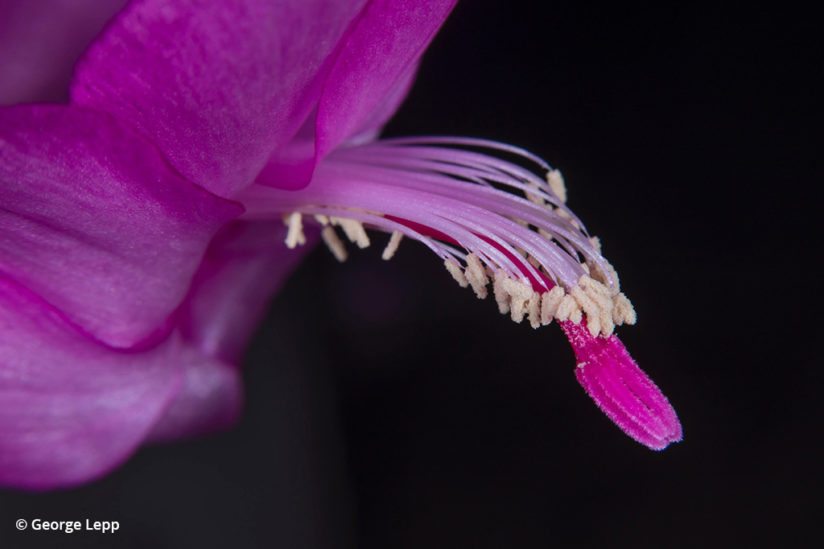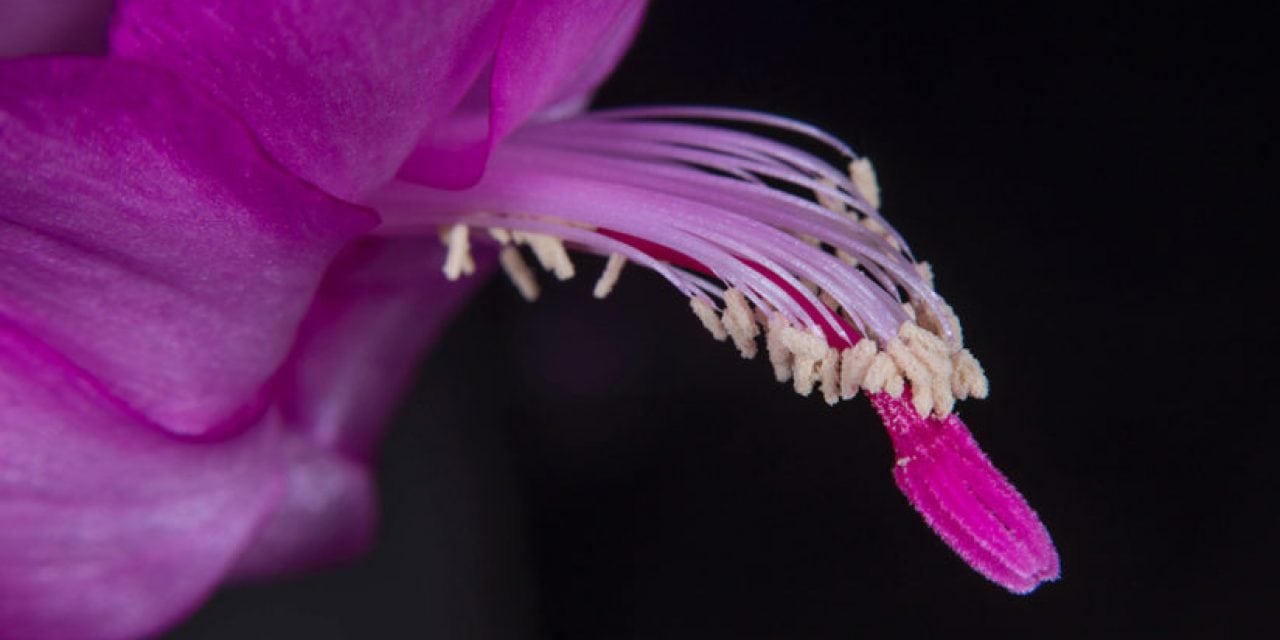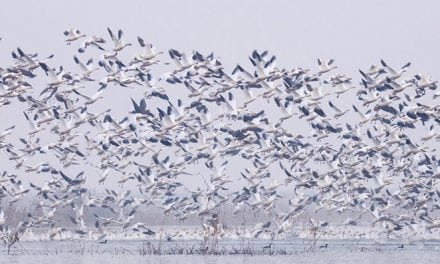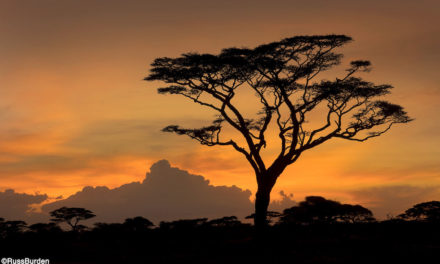
Low-Budget High Mag
Question: I want to reverse my 50mm, f/1.8 Canon lens to take macro photographs. How, then, can the lens be stopped down to small apertures to increase the depth of field? –S. Ahmed, Via the internet
Answer: While it may sound like a crazy idea, reversing a lens of 50mm or wider is a reasonable way to get a lot of magnification from what’s already in your bag. You can purchase inexpensive reversing rings that will mount the front of the lens to the camera body. With a 50mm, this achieves nearly 1:1 magnification; wider-angle lenses will yield more. But with modern lenses, separating the lens mounting apparatus from the camera interrupts the connections that control the capture, whether automatically or manually. Most critically for macro photography, it becomes impossible to set the aperture from the camera. There are several ways to solve this problem. And the solutions may sound crazy, too, but they do work. Honest.
One option for Canon users is to set the aperture of the lens before you reverse it. Set the aperture as desired, press the depth-of-field preview, and keep the button depressed as you remove the lens. This locks the lens aperture position when the lens is reversed. The down side of this fix is that the viewfinder is quite dark, and changing the aperture requires remounting the lens in its normal position.
For those photographers using Nikon G or DX lenses, a Fotodiox “filter” is available for around $20. It mounts on the exposed end of the reversed lens, allowing aperture control and protecting the elements. Again, the viewfinder would be dark at the time of exposure. I have been unable to find this accessory for any other camera brands.
The best way to control the aperture of a reversed lens is to mate it to another lens that is attached to the camera body (the prime lens). A typical combination connects a reversed normal to wide-angle lens with a medium telephoto mounted to the camera. The telephoto increases the overall magnification and also controls the aperture via its connections with the camera. Viewfinder functions are maintained. To determine the total magnification achieved with any particular lens combination, divide the focal length of the reversed, wider front lens into the focal length of the prime lens. So, for example, if the telephoto lens is 200mm and the wide-angle/normal lens is 50mm, the resulting magnification would be 4x!
Combining the two lenses requires a coupling ring that will accommodate the filter size of both lenses. For example, if the filter size of the prime lens is 67mm and the reversed front lens is 52mm, a coupling ring of 67/52mm will be needed. I confess that I’ve mated the two lenses with black masking tape and achieved good results, but I don’t recommend this option, especially for use in the field.
So, for those who want to accomplish higher-magnification photography on a macro budget, lens reversal is definitely an option. Alternatively, you could purchase a macro lens to take you to 1x or 2x with all of your connections active or, my personal favorite, the Canon MP-E 65mm f/2.8 1-5x Macro, which will only set you back a cool $1,050.
Variable Vs. Graduated Filters
Question: What is the difference between a variable ND and a graduated ND filter? –J. Wright, Via the internet
Answer: Neutral density (ND) filters are intended to reduce the amount of light entering the lens without affecting tones or colors, which enables the photographer to employ techniques such as slow shutter speeds and wide apertures to achieve special effects while not over-exposing the image. A typical use is to enable a long exposure of moving water for a soft, flowing effect. The standard filters are available in a variety of sizes and darkening capabilities, measured in stops.
A variable neutral density filter is comprised of two polarizing filters sandwiched together. Rotating the front filter adjusts the overall darkness, offering an extensive range of ND that can be variably controlled, usually between two and eight stops. (You can visualize this effect by taking two pairs of polarized sunglasses and rotating one in front of the other.) Variable ND filters are usually not designed to work on telephoto lenses, because all that glass might affect the sharpness of the lens.
A graduated ND filter darkens only part of the scene, while leaving the remainder unaffected. Its typical use is to darken the sky without reducing the light in the foreground. The best graduated ND filters are square in shape; rather than screwing into the lens, they fit into a separate frame that allows the photographer to reposition the transition area in alignment with the landscape. Larger systems will work with a variety of lenses, including some wide-angles.
Unfortunately, few horizons follow straight lines, so the sharp division of the graduated ND filter may not always achieve the desired results. And while both variable and graduated ND filters are readily available, choose excellent quality, so as not to compromise the capability of your lens.
I cannot end this discussion without noting that in the digital age, the effects sought from graduated neutral density filters can be better achieved by compositing for high dynamic range (HDR) or in post-capture image optimization. HDR does require the subject to be motionless during multiple captures; however, HDR does not care if the horizon is straight.
Profiles In Color And Texture
Question: I use an Epson Stylus Photo R2000 printer, and I have several boxes of Epson Exhibition Fiber inkjet paper. I’ve searched the Epson online printer profiles, and I’ve asked Epson directly, but I have not been able to secure the software I need to achieve proper color rendition in my prints. Do you have any suggestions? –P. Faust, Via the internet
Answer: In the darkroom days, photographers who did their own printing were seeking both artistic interpretation that could be achieved by manipulation of the printing process and control of the final product. Now we do the artistic interpretation—or manipulation—in the computer, with the exception of the significant differences that can be achieved by using different types of print media. Printer profiles are intended to bridge the gap between computer image processing software and any particular printer/paper combination to allow the photographer to maintain control of the output. But when you do your own printing, the problem of missing profiles will arise sooner or later.
Your printer, the Epson Stylus Photo R2000, with its UltraChrome Hi-Gloss inks, is not recommended for matte fiber paper, which is probably why a profile is not provided for your printer/paper combination. That doesn’t mean you can’t use it or that it won’t give you excellent results. There are a couple of alternative ways to get the profile you need. The first is to go to a profile website, such as Profiles By Rick (profilesbyrick.com). You download a target image from their website, print it on your printer per their directions, and then mail the result to them. They read the target image and create a profile that is optimized for your printer and the paper you would like to use. The cost is approximately $25.
For a few hundred dollars, you can purchase a do-it-yourself system, such as the ColorMunki from X-Rite, that includes the target image files, software and a color reader that connects to your computer and produces paper profiles for your printer. This is a great tool if you do lots of printing and like to experiment with print media different from those sold by the printer manufacturer.
Problem Solving For Long Exposures
Question: I’m having a problem getting sharp images with long exposures. I use a Bogen 3221 aluminum tripod that seems to be rock solid, use live view mode, a self-timer, and hang a weight on the center post. Exposures of two seconds and longer result in a high proportion of unsharp images. Would a moderately priced carbon fiber tripod help? –B. Pool, Salem, Oregon
Answer: While it sounds as if you are doing everything right, clearly there is a problem. However, it’s not likely to be the tripod. A carbon fiber tripod will cost more, be lighter and won’t freeze your hands in cold temperatures, but in terms of steadiness, it will do nothing more than your aluminum tripod does. Make sure you have a good tripod head, such as a ballhead. Use a cable release or remote wireless trigger such as the CamRanger so that you are not touching the camera/lens. Beyond that, do the following tests:
- Check the lens focus on each lens. After using the autofocus on a stationary subject, use a loupe to check the focus on the rear LCD. If the focus is off (front- or rear-focused), check your camera manual and perform a micro adjustment if your camera allows that.
- Check the lens operation. Using the tripod and live view mode, focus on a flat subject with lots of detail; shoot with different apertures and shutter speeds. If the results are sharp, the lens is fine.
- Check image stabilization. If you are having trouble only with long exposures, be sure to disable image stabilization when on a tripod. During long exposures, the stabilization system “seeks” a problem to solve, thus causing one. While some newer lenses such as Canon’s L Mark IIs include a feature that allows IS on a tripod, I still turn it off, especially when shooting long exposures or video.
The post Control Freaks appeared first on Outdoor Photographer.
















